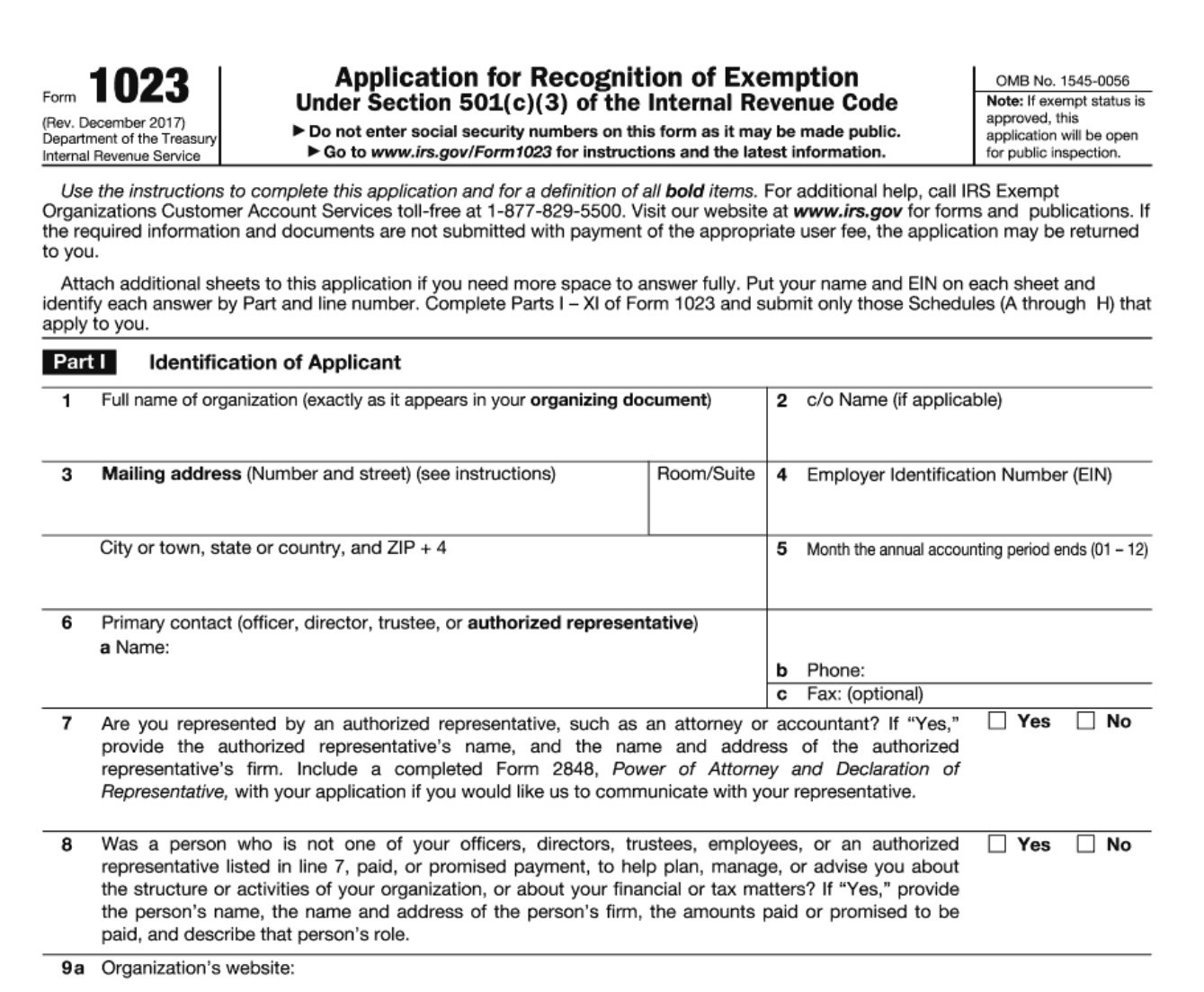Do you dream of making a difference? Of doing things differently to benefit your community, country, or even the world? If you're fueled by a passion to drive change, starting a nonprofit might be your path forward.
It’s true that launching one takes work—and that some steps, like the legal requirements and paperwork, may be confusing. But it’s not impossible if you do your research, get your ducks in a row, and stay thorough and focused.
In this article, we’ll look at 10 steps to start a successful nonprofit organisation, including how to make a nonprofit business plan, choose your legal structure, raise funds, and launch as an official company.



What is a nonprofit organisation?
A nonprofit organisation is a business entity formed for purposes other than profit generation. The US Internal Revenue Service (IRS) grants it tax-exempt status due to its contribution to public welfare.
Nonprofits reinvest all profits back into their mission, which may range from advancing medical research to promoting arts and education.
→ Click Here to Launch Your Online Business with Shopify
Nonprofit organizations may also be referred to as non-stock corporations or 501(c)(3) organizations, based on the tax code section that grants them tax-exempt status.
What are the different types of nonprofits?
Nonprofits come in three primary forms: public charities, private foundations, and advocacy organizations. Each comes its own set of operational rules and regulations.
What is the difference between a nonprofit and a for-profit?
The main difference between a nonprofit and a for-profit lies in their core objectives and ownership. A for-profit has shareholders and aims to generate profit for them. A nonprofit operates without shareholders and focuses on advancing its mission.
Advantages of starting a nonprofit
Some advantages of operating a nonprofit include:
- You qualify for local and state tax exemptions
- Federal tax-exempt status eliminates your obligation to pay federal income taxes
- You’re eligible for grants from government agencies and foundations
- You can solicit and receive donations from individuals and organizations
But there are some disadvantages, as well. For example:
- Your activities must prioritize the public good, not individual or shareholder profits
- You must hold regular board meetings
- You must reinvest all profits into your mission.You must keep detailed financial records to maintain your tax-exempt status
How to start a nonprofit: 10 steps
Let’s go through the steps required to build and launch your charitable organization.
1. Craft your mission statement
Before taking any official steps, you’ll need to carve out your place in the nonprofit world: who are you serving, what’s the need you’re fulfilling, and why should others support your cause?
Your mission statement is one of the most foundational branding and identity elements of your nonprofit. As you write it, be sure that it’s as clear and succinct as possible, showcasing who you are and what you’re all about. An ideal nonprofit’s mission statement is one or two sentences.
And remember: Your mission statement can grow and evolve with your nonprofit, so you don’t need to overthink it.
Here’s a great example from The Nature Conservancy:

2. Write a nonprofit business plan
To build momentum and long-term buy-in from donors, volunteers, and staff, it’s critical to have a detailed, well-informed nonprofit business plan. It should include:
- Executive summary: High-level overview of your mission, market analysis to prove a need in the community, and description of how you’ll meet that need
- Services: Detailed explanation of your nonprofit’s services and offerings
- Marketing: How you’ll spread the word, including your needed marketing budget and how you’ll allocate it
- Operations: Day-to-day functions and organizational structure, including team member roles and tasks
- Finances: All the fun numbers, like operating costs, projected cash flow, income statements, balance sheets, budget, revenue streams, funding needs, etc.
3. Name your new nonprofit
Now for the fun part. You’ll want a name that’s unique but descriptive. Pay attention to available website domain names too, as you’ll ideally want your website to match your company name. If you want some ideas, try a free business name generator like the one from Shopify.
Here, I described my business as “a nonprofit focused on donating leftover food from restaurants,” and it returned two dozen results on the first round (with the option to keep going):

4. Choose your legal structure
It’s important to keep in mind that not all nonprofit organzations will be able to get federal tax exempt status from the Internal Revenue Service (IRS), and not all nonprofits will be able to give tax deductions to donors. For example, 501(c)(3) and 501(c)(4) organizations may offer tax deductible contributions, while 501(c)(5) and 501(c)(7) organizations don’t.
The IRS has five broad categories with more than 30 types of nonprofit organization structures, depending on the nature and focus of the nonprofit, like community social welfare, labor, agricultural, trade, social and recreational organizations, and more. Be sure to do your research on which is best for you.
5. Apply for official status with the government
Make it official by filing articles of incorporation according to your state. These generally require details like the nonprofit’s name, board members, and legal structure. To apply for tax exempt status with a 501(c)(3), use IRS Form 1023 (or 1023-EZ if you qualify for this short-form version). You may also need to file a Charitable Solicitation Registration with your state and pay a filing fee.
If you’re feeling overwhelmed with choosing the right paperwork and application process, consider consulting a nonprofit attorney who can help advise you or submit the necessary documents.

6. Open a bank account
Submit an SS-4 form to get an employer identification number (EIN) from the IRS. Once you receive your EIN, you can open a bank account for your new nonprofit corporation. This is where all your finances should be conducted. It may be tempting to use personal accounts, but you’ll thank yourself later if you keep them separate. This is especially true for tax considerations.
7. Name your board members
By law, every nonprofit needs to have a board of directors. The rules will be different by state, so do your research. But generally, you should have between 3three and 31 members, with most of them independent, meaning they’re unaffiliated with your nonprofit organization.
Board members hire and supervise the executive director, approve budgets, and make sure the nonprofit’s mission is being followed. After you appoint your board, next is electing a president, VP, treasurer, and secretary, who will generally serve for a year.
8. Write your bylaws and policies
Bylaws dictate things like how your nonprofit will operate, how you’ll make decisions internally, how you’ll choose your officers and leadership, and how the board will meet to conduct business.
Other needed policies include conflict of interest policies, which make sure key players like directors, officers, and top employees aren’t using the nonprofit to benefit their personal interests. These policies should be approved by your board and updated regularly.
9. Begin fundraising
Secure your funding sources and establish a financial model early in the process. A lack of initial funding can stall your nonprofit before it gains momentum.
Consider these funding options:
- Grants: Grants offer an opportunity for initial capital. Typically, grantmakers target specific functions or niche programs. While grants can jumpstart your nonprofit, applying for them demands time and they usually don’t offer repeat funding.
- Startup accelerators: Some accelerators specialize in nonprofits and can offer investment, mentorship, office space, fiscal sponsorship, and networking opportunities to help you get started.
10. Launch and market your nonprofit
With approved legal documents and seed funding in hand, you can officially launch your nonprofit. Launching marks the beginning, not the end, of your nonprofit’s journey.
Next, inform potential supporters your organization is operational. This stage calls for a strategic marketing plan.
Your marketing plan should specify the messages you’ll share with different stakeholders, such as potential donors and community partners, and through which channels. For instance, if targeting young donors, a strong social media presence may be your best bet.
How long does it take to form a nonprofit
The timeline for forming a nonprofit varies widely. Your speed in organizing the entity and completing tax exemption forms primarily dictates the duration. For many, this phase spans several months.
Once you submit your forms, expect to hear back from the IRS within three to 12 months. If your nonprofit generates more than $50,000 annually, you have the option to expedite the process by filing Form 1023-EX, which typically takes two to three weeks for processing.
How do I start a nonprofit with no money?
Find like-minded individuals passionate about your cause to build your foundational team. Once assembled, search for grants and financial aid tailored for startups like yours. To further reduce costs, ask professionals or businesses to provide services pro bono in support of your mission.
Get started today—your community is waiting
Many aspiring founders feel intimidated or even overwhelmed by the process of getting their nonprofit corporation off the ground. If you’re in this boat, don’t worry. Just do your research based on the region and state you’re applying and operating from, and take it step by step.
If you have the resources, consider hiring an attorney to help with the legal structure and paperwork, as this is the place where many founders get caught up. With the right help and determination, you’ll be well on your way to bringing your vision to life.






